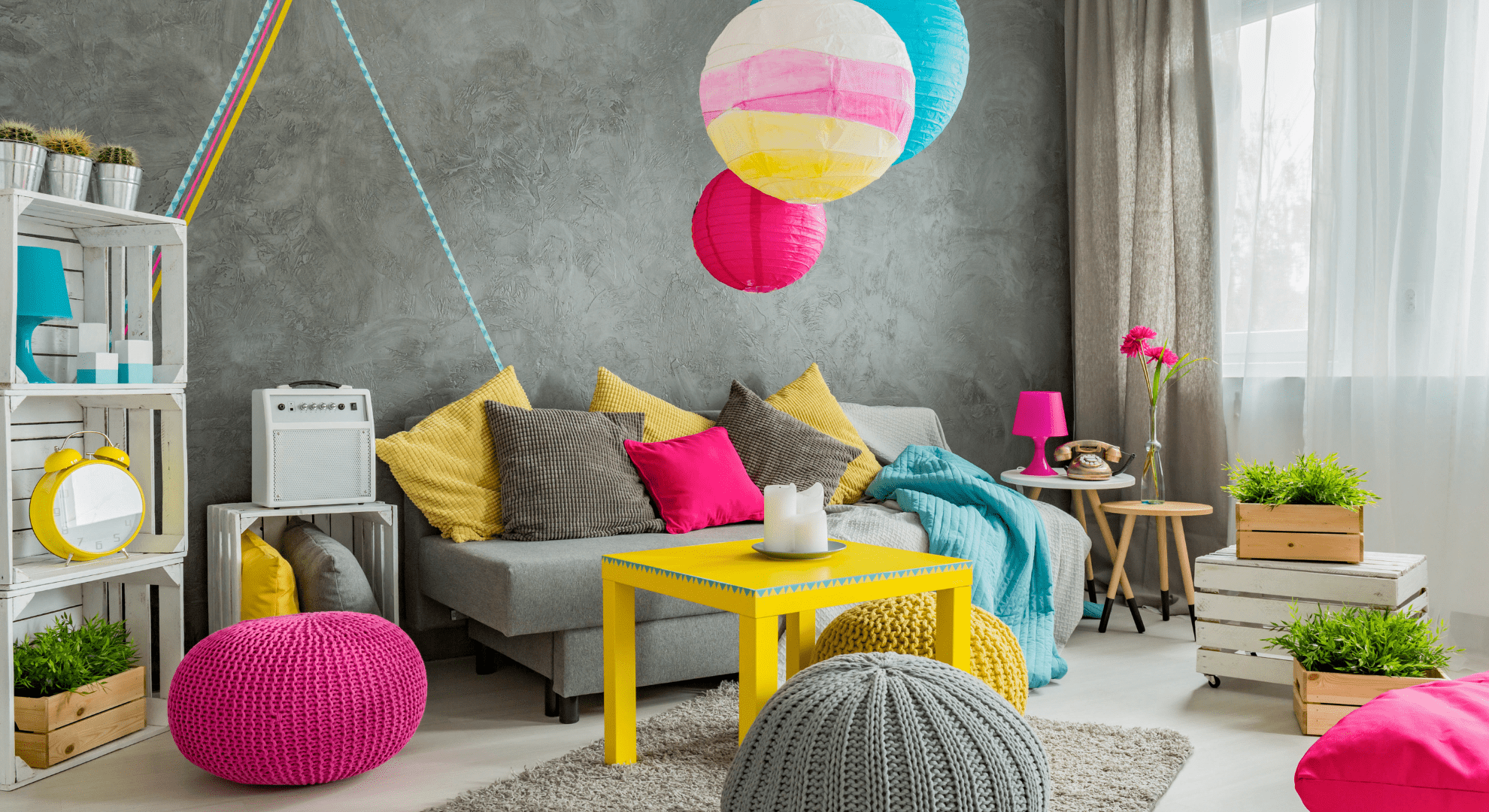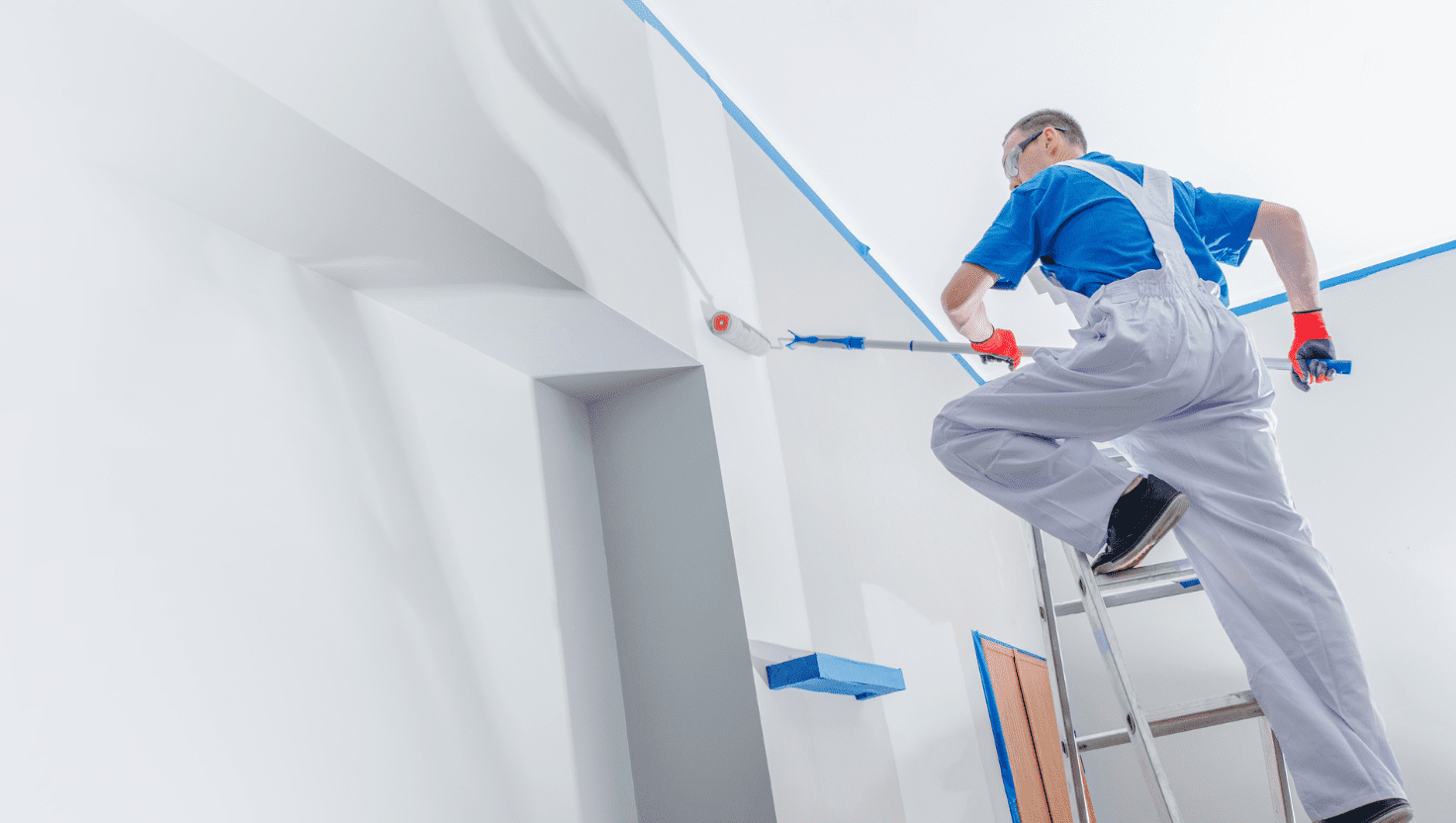With its diverse environment, Australia offers endless inspiration for your home’s interior. In this article, we’ll explore various ways to infuse your living space with colours, patterns, and textures inspired by Australia’s unique landscape.
To ensure the best results, consider using Contrast Painting, a professional Perth residential painting service that will help you achieve the perfect look for your home.
Interior painting ideas
Australia’s unique environment offers endless inspiration for interior painting ideas. Below, we’ll explore ways to infuse your home with the colours, patterns, and textures that capture the essence of the Australian landscape.
Embrace the Australian landscape
Australia’s diverse landscape offers a plethora of inspiration for your home’s colour palette. Consider these ideas to bring the beauty of the outdoors into your living space.
- Outback: Opt for warm, earthy tones like terracotta, burnt orange, and ochre, reminiscent of the vast Australian Outback. Incorporate these colours into your walls or as accents through cushions, artwork, and rugs.
- Rainforest: Capture the essence of the Daintree Rainforest with lush greens such as eucalyptus, fern, and moss. These tones work particularly well in rooms with abundant natural light, helping to create a tranquil, nature-inspired sanctuary.
- Coastal: Channel the serenity of the Great Barrier Reef by selecting calming blues and aquas, reminiscent of crystal-clear waters. Combine these hues with sandy neutrals to create a soothing coastal atmosphere.
Add a coastal touch
Australia is renowned for its stunning coastline, and you can bring the beach vibe into your home with the following ideas:
- Colour palette: Choose crisp whites, sandy beiges, and soft pastel blues and greens for your walls, creating a bright and airy feel. These colours can also be incorporated into your furniture, textiles, and accessories for a cohesive look.
- Materials and finishes: Incorporate coastal elements such as weathered wood, wicker, and rattan in your furniture and accessories to enhance the beachy aesthetic.
- Artwork: Adorn your walls with beach-inspired artwork, featuring seascapes, sand dunes, or coastal flora and fauna.
-
Experiment with geometric patterns
Geometric patterns can add visual interest and a contemporary touch to your space. Here are some ideas for incorporating these shapes into your home:
- Accent wall: Create a bold focal point by painting a geometric pattern on one wall. Consider using painter’s tape to achieve crisp lines and even spacing between shapes.
- Subtle details: If you prefer a more understated approach, introduce geometric patterns through smaller elements such as a painted border or a patterned panel above a fireplace or doorway.
- Colour choice: For a harmonious look, select colours within the same family or complementary shades. Alternatively, go bold with contrasting hues for a more dramatic effect.
Bring the outdoors in with a botanical feature wall
Celebrate Australia’s love for green spaces by incorporating a botanical feature wall in your home.
- Painted foliage: Use a variety of shades of green to paint leaves and branches directly onto your wall, creating a vibrant and organic design.
- Stencils: Use stencils to achieve a more uniform and intricate botanical pattern.
- Wallpaper: Choose a high-quality, nature-inspired wallpaper for a hassle-free option that still delivers a stunning result.
Try colour blocking for a modern look
Colour blocking involves using contrasting colours to create visually striking sections on your walls. Here’s how you can integrate this technique into your home.
- Complementary colours: Select colours that sit opposite each other on the colour wheel, such as blue and orange or yellow and purple, to achieve a harmonious balance.
- Triadic colour scheme: Choose three colours that are evenly spaced around the colour wheel, such as red, blue, and yellow, for a vibrant and dynamic effect.
- Split-complementary colours: Pair a base colour with the two colours adjacent to its complement for a slightly less intense contrast, but still a visually appealing result.
Incorporate texture with a faux finish
Adding texture to your walls can create a sense of depth and character in your space. Experiment with these faux finish techniques for a unique, handcrafted appearance.
- Ragging: Apply paint to your wall using a cloth or rag, creating a subtle textured effect. This technique works well with both single and multiple colours for a layered appearance.
- Sponging: Use a sponge to dab paint onto your wall, creating an irregular pattern that adds visual interest and texture. Experiment with different sponge sizes and paint colours to achieve your desired effect.
- Stippling: Stipple paint onto your wall using a brush or roller, creating a dotted effect that adds depth and dimension. This technique can be used with one or more colours, depending on your desired outcome.
Embrace the power of a dark feature wall
While many homeowners gravitate towards light and bright interiors, a dark feature wall can create a striking contrast and add sophistication to any room. Consider these tips when incorporating a dark feature wall.
- Colour choice: Opt for deep blues, rich greens, or charcoal greys to make a bold statement while maintaining a cosy atmosphere. Metallic accents, such as gold or copper, can also add a touch of glamour.
- Room size: Dark colours can make a room feel more intimate, so consider using this technique in larger spaces or rooms with ample natural light to avoid making the space feel too confined.
- Balance: Ensure your space remains inviting by balancing your dark feature wall with lighter elements, such as furniture, textiles, and accessories.
Emphasise architectural features
Use paint to highlight your home’s unique architectural elements and create visual interest.
- Mouldings and trims: Paint your mouldings, trims, and window frames in a contrasting colour to your walls, drawing attention to these features and adding depth to your space.
- Recessed walls or alcoves: Paint recessed areas in a different colour or shade to create a subtle contrast and emphasise the architectural detail.
- Ceilings: Don’t neglect your ceilings—painting them in a complementary colour to your walls or a bold hue can add an unexpected element of interest to your room.
Exterior home painting ideas
Transforming the exterior of your home not only enhances its curb appeal but also protects it from the elements. With Australia’s diverse climate and unique aesthetic, it’s important to choose the right colours and techniques for your exterior painting project. Below, we’ll provide tips and ideas to help you create a stunning and lasting impression.
Choosing the right colours
Selecting the perfect colour for your home’s exterior can be a daunting task. Here are some factors to consider when making your decision:
- Architectural style: Consider your home’s architectural style and choose colours that complement it. For example, a classic Australian Federation home may look best with a traditional colour scheme, while a modern minimalist design might suit bold, contrasting colours.
- Surrounding environment: Take inspiration from your local environment, such as the colours of the natural landscape or the hues of neighbouring homes. This will help your home blend seamlessly into its surroundings.
- Climate: Lighter colours tend to reflect heat, making them more suitable for warmer climates.
- Accent colours: Don’t forget to select accent colours for your trim, doors, and other architectural features. These colours should complement the main colour of your home and create visual interest.
Preparing the surface
Proper surface preparation is crucial for a successful exterior painting project. Follow these steps to ensure a long-lasting result.
- Clean the surface: Remove dirt, mildew, and loose paint using a pressure washer or a soft brush and soapy water. This will help the new paint adhere properly to the surface.
- Repair damage: Inspect your home’s exterior for damage, such as cracks, rot, or peeling paint. Repair or replace damaged materials before painting.
- Sand and prime: Sand any rough surfaces to create a smooth, even finish. Apply a high-quality primer to seal and protect the surface, ensuring better paint adhesion.
Selecting the right paint
Choose a high-quality, weather-resistant paint specifically designed for exterior use. Consider these factors when selecting your paint.
- Durability: Opt for paints with built-in UV protection and water resistance to protect your home from Australia’s harsh weather conditions.
- Finish: Exterior paints are available in various finishes, including matte, satin, and gloss. Matte finishes help conceal imperfections, while satin and gloss finishes provide added durability and are easier to clean.
- Eco-friendliness: Look for low-VOC (volatile organic compounds) paints, which are better for the environment and your health.
Painting techniques and tips
Ensure a professional-looking result by following these exterior painting techniques and tips.
- Use quality tools: Invest in high-quality brushes, rollers, and sprayers for a smoother, more even finish.
- Apply multiple coats: Apply at least two coats of paint to ensure proper coverage and longevity. Allow each coat to dry thoroughly before applying the next.
- Paint in the right conditions: Avoid painting in extreme temperatures or during wet weather, as this can negatively impact the paint’s adhesion and drying time.
- Start at the top: Begin painting at the top of your home and work your way down to prevent streaks and drips.
- Consult a professional: While it might be tempting to DIY your next painting job you’ll likely never attain the results of a trained professional such as our house painters Perth experts at Contrast Painting.
Creative exterior painting ideas
Add character and style to your home’s exterior with these creative painting ideas.
- Two-tone colour schemes: Consider using a two-tone colour scheme, with one colour for the main body of the house and a contrasting colour for the trim, doors, and other features.
- Highlight architectural details: Use paint to accentuate your home’s unique architectural elements, such as gables, window trims, or decorative mouldings.
- Front door statement: Make a bold statement by painting your front door in a vibrant, eye-catching colour that contrasts with the rest of your home’s exterior. This will create a welcoming focal point and add personality to your home.
- Add texture: Experiment with textured paints or finishes, such as stucco or sand-textured paint, to create visual interest and depth on your home’s exterior.
- Coordinate with landscaping: Coordinate your exterior colour palette with your home’s landscaping, including plantings, pathways, and outdoor furniture. This will create a cohesive and harmonious outdoor living space.
Final thoughts
Transform your home by incorporating the essence of the Australian landscape into your interior design. Whether it’s Outback-inspired earthy tones, rainforest greens, or coastal blues, these interior painting ideas will help you create a stunning and inviting living space.
Don’t hesitate to reach out to Contrast Painting, the leading Perth painting service, to assist you in achieving your desired look and ensuring a high-quality finish. So, are you ready to bring the beauty of Australia into your home? Contact Contrast painting today.







